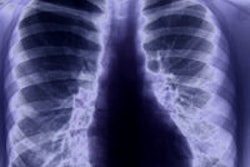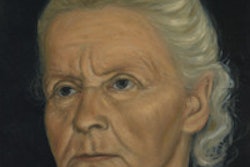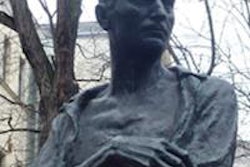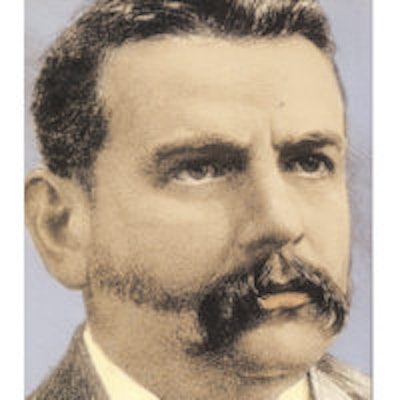
Glasgow is a wonderful place and well worth a visit. In 1990, it was designated a European City of Culture, and next year it will host the XX Commonwealth Games. The city is on the banks of the River Clyde, and is located in West Central Scotland. The second river of Glasgow is the Kelvin, and this name was used to create the title of Baron Kelvin, and is the SI unit of temperature.
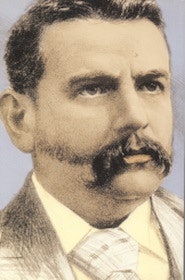 John Macintyre (1857-1928) was a pioneer of radiology.
John Macintyre (1857-1928) was a pioneer of radiology.
John Macintyre was born in Glasgow in 1857. His mother was a first cousin to the Scottish explorer and missionary David Livingstone, and he graduated as a doctor in 1882. In 1885, he was appointed as consulting medical electrician at the Glasgow Royal Infirmary, and in 1886 as assistant surgeon with an interest in diseases of the ear, nose, and throat. In 1887, the electrical department was opened, and probably for the first time in hospital practice, electrical cables were carried from the department to all the hospital wards to avoid the need to carry heavy apparatus around the building.
After Wilhelm Röntgen discovered x-rays in 1895, Macintyre sent copies of Röntgen's paper to scientists all over the world, including the famous physicist Lord Kelvin (1824-1907) in Glasgow. Kelvin gave the paper to J.T. Bottomley, who then met with Macintyre and they both worked together. In January 1896, Macintyre lectured to Glasgow University on "The New Light -- X-rays," and on 15 February 1896, Bottomley, Lord Blythswood, and Macintyre spoke at the Philosophical Society of Glasgow.
In March 1896, Macintyre obtained the consent of the managers of Glasgow Royal Infirmary to start an x-ray department, which was the first in the world. Macintyre made the first radiographic demonstration of a renal calculus, which was proven at surgery. In 1897, the first issue of the new journal Archives of Clinical Skiagraphy (the forerunner of the British Journal of Radiology) contained three papers by Macintyre. In the same year, Macintyre made his famous demonstration of the cine-radiological study of the frog's leg to the Royal Society of London and corresponded with Röntgen who gave him an x-ray tube.
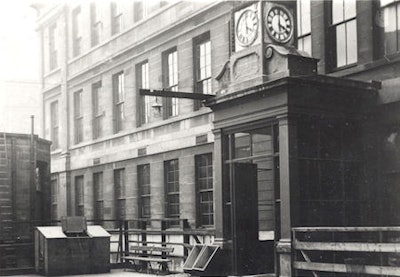 Electrical Pavilion, Glasgow Royal Infirmary.
Electrical Pavilion, Glasgow Royal Infirmary.Also that year, the famous New Electrical Pavilion opened at the Glasgow Royal Infirmary, and the rooms were fitted with modern and up-to-date apparatus. Electricity was supplied either by the 250 volt main supply from Glasgow Corporation, or from the department's own generator. Patients could either attend the department or could be examined in the wards or operating theaters because these were all wired for electricity. The department provided both electrical (electro-therapeutic) and radiological services. The radiological services included plain film radiography, radiotherapy, foreign body localization, and stereoscopic radiography.
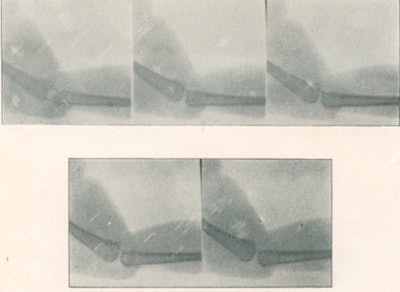 Cineradiograph of a frog's leg (1897).
Cineradiograph of a frog's leg (1897).It is very interesting to see how very contemporary the concerns of Macintyre and the other pioneers were. By 1903 Macintyre was already saying that the new building from 1897 was being fully utilized, and that the number of staff had been increased to examine the large number of cases. In 1897, the Electrical Pavilion had been built as large as possible, and by 1903 the demands upon it were far in excess of what could be accommodated. The department was staffed by two medical officers, an unqualified assistant, and a staff of nurses. It's interesting to see that the role of the radiological nurse can be seen as crucial right back to the earliest days of radiology departments, and that nurses are not a recent addition.
By 1903 the Electrical Pavilion was taking 2,000 radiographs each year and performing many fluoroscopic examinations. Macintyre himself felt the most important introduction to the hospital was the electrotherapeutic department. In 1903, Macintyre was also looking forward to the rebuilding of the hospital and was hoping, as many generations of radiologists were to do in subsequent years, for still greater facilities. Nothing really changes -- radiology needs more resources as our work increases!
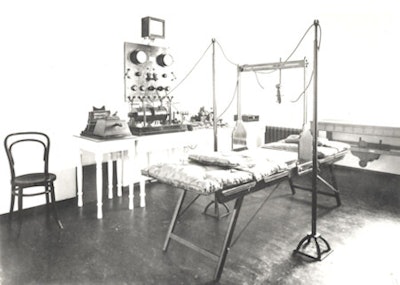 X-ray apparatus, Glasgow Royal Infirmary.
X-ray apparatus, Glasgow Royal Infirmary.Macintyre was president of the Röntgen Society -- the forerunner of the British Institute of Radiology -- from 1900 to 1901. He died on 29 October 1928 in his home city of Glasgow. He would have loved to see our modern departments and where his pioneering work lead.
Dr. Adrian Thomas is chairman of the International Society for the History of Radiology and honorary librarian at the British Institute of Radiology.
References
- Calder JF. The History of Radiology in Scotland, 1896-2000. Edinburgh, U.K.: Dunedin Academic Press; 2001.
- Thomas AMK, Banerjee AK. The History of Radiology. Oxford: Oxford University Press; 2013.
The comments and observations expressed herein do not necessarily reflect the opinions of AuntMinnieEurope.com, nor should they be construed as an endorsement or admonishment of any particular vendor, analyst, industry consultant, or consulting group.





